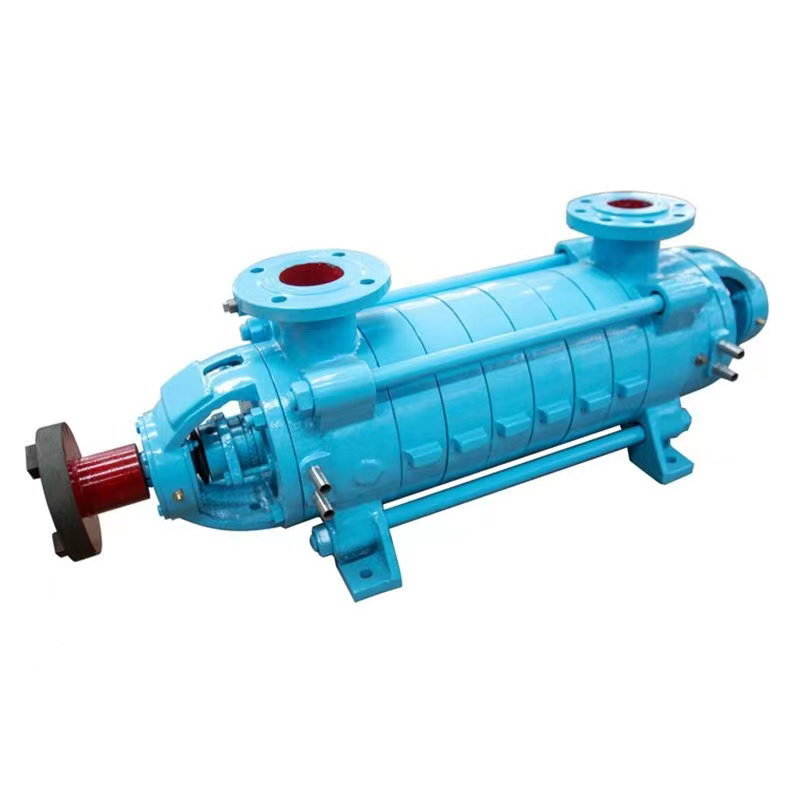The Role of Multistage Pumps in Enhanced Oil Recovery: An In-Depth Analysis
Aug 10,2025

The Role of Multistage Pumps in Enhanced Oil Recovery
Table of Contents
1. Introduction to Enhanced Oil Recovery
2. Overview of Multistage Pumps
3. How Multistage Pumps Function
3.1 Design and Operating Principles
3.2 Advantages of Multistage Pumps in EOR
4. Applications in Enhanced Oil Recovery
4.1 Types of Enhanced Oil Recovery Techniques
4.2 Case Studies: Successful Implementations
5. Challenges in Using Multistage Pumps
5.1 Common Issues and Solutions
5.2 Maintenance Considerations
6. Future Trends in EOR and Pump Technology
6.1 Innovations on the Horizon
6.2 The Role of IoT and Automation
7. Conclusion
8. Frequently Asked Questions (FAQs)
1. Introduction to Enhanced Oil Recovery
Enhanced Oil Recovery (EOR) is a crucial process in the oil and gas industry, aimed at extracting more oil from reservoirs that traditional methods cannot fully exploit. As global energy demands increase and conventional oil reserves dwindle, EOR methods have become indispensable. This article delves into how **multistage pumps** enhance the efficiency and effectiveness of EOR processes.
2. Overview of Multistage Pumps
Multistage pumps are specialized types of centrifugal pumps designed to handle high pressures and large flow rates. Unlike single-stage pumps, which have only one impeller, multistage pumps consist of multiple impellers in a series configuration. This design allows them to generate significant pressure increases, making them ideal for applications requiring high energy transfer, such as EOR.
3. How Multistage Pumps Function
3.1 Design and Operating Principles
The design of multistage pumps involves several impellers aligned on a common shaft, each contributing to the total pressure increase. The fluid enters the first impeller, where it gains kinetic energy, then moves to a diffuser that converts this energy into pressure. This cycle repeats through subsequent stages, allowing for a significant elevation in pressure suitable for overcoming reservoir characteristics.
3.2 Advantages of Multistage Pumps in EOR
The benefits of utilizing multistage pumps in EOR are numerous. They provide:
- **High Efficiency**: Capable of maintaining high flow rates while minimizing energy consumption.
- **Versatility**: Adaptable to various EOR methods, including thermal, gas injection, and chemical flooding.
- **Reliability**: Designed to withstand harsh conditions, ensuring consistent performance over time.
- **Cost-Effectiveness**: Reducing operational costs through energy savings and improved oil extraction rates.
4. Applications in Enhanced Oil Recovery
4.1 Types of Enhanced Oil Recovery Techniques
EOR techniques can be broadly categorized into three main types:
1. **Thermal Recovery**: Involves injecting steam into the reservoir to reduce oil viscosity.
2. **Gas Injection**: Utilizes gases such as CO2 to maintain reservoir pressure and displace oil.
3. **Chemical Flooding**: Involves injecting chemicals to enhance oil mobility and recovery rates.
Multistage pumps are integral to these processes, ensuring the efficient transport of fluids and maintaining necessary pressures.
4.2 Case Studies: Successful Implementations
Several case studies highlight the effectiveness of multistage pumps in EOR. For instance, a major oil company implemented multistage pumps in their CO2 injection process, resulting in a 30% increase in oil recovery rates within the first year. Another case involved the use of multistage pumps in thermal recovery, leading to reduced steam generation costs and overall improved efficiency.
5. Challenges in Using Multistage Pumps
While multistage pumps offer significant advantages, they are not without challenges.
5.1 Common Issues and Solutions
Some common problems encountered include:
- **Cavitation**: This occurs when the pressure in the pump falls below the vapor pressure of the fluid, leading to damage. Solutions involve ensuring proper NPSH (Net Positive Suction Head) and using cavitation-resistant materials.
- **Wear and Tear**: The continuous operation at high pressures can lead to component wear. Regular inspections and timely replacements can mitigate this issue.
5.2 Maintenance Considerations
Routine maintenance is crucial for the optimal functioning of multistage pumps. Regular checks on bearings, seals, and impellers can prevent unexpected failures. Implementing a predictive maintenance program using IoT technology can further enhance reliability and decrease downtime.
6. Future Trends in EOR and Pump Technology
The future of EOR and multistage pump technology is constantly evolving.
6.1 Innovations on the Horizon
Emerging technologies, such as improved materials and advanced control systems, are set to enhance the performance of multistage pumps. The integration of AI in monitoring systems can lead to more efficient operations and reduced operational costs.
6.2 The Role of IoT and Automation
The Internet of Things (IoT) is transforming how multistage pumps are monitored and controlled. Real-time data analytics can optimize pump performance, predict maintenance needs, and improve the overall efficiency of EOR processes.
7. Conclusion
In summary, multistage pumps play a pivotal role in enhancing oil recovery, offering numerous benefits that significantly impact oil extraction efficiency. Their design facilitates high pressure and flow rates, critical for various EOR techniques. As the oil and gas industry faces increasing challenges, the adoption of advanced multistage pump technologies will be essential for maximizing recovery while minimizing costs.
8. Frequently Asked Questions (FAQs)
What is the primary function of multistage pumps in EOR?
Multistage pumps are used to increase the pressure of fluids, allowing for effective oil extraction from reservoirs.
How do multistage pumps compare to single-stage pumps?
Multistage pumps provide higher pressure and flow rates than single-stage pumps, making them more suitable for EOR applications.
What are the common issues encountered with multistage pumps?
Common issues include cavitation, wear and tear, and operational inefficiencies, which can be mitigated through proper maintenance and monitoring.
What is the future of multistage pump technology in the oil industry?
Future advancements may include AI integration, improved materials, and IoT monitoring systems, enhancing efficiency and reducing operational costs.
How can predictive maintenance benefit multistage pumps?
Predictive maintenance can help anticipate potential failures, reducing downtime and maintenance costs through timely interventions.
By understanding the critical role that multistage pumps play in enhanced oil recovery, industry professionals can optimize their operations and ensure sustainable practices in the ever-evolving oil and gas sector.
PREVIOUS:
Contact Us
E-mail :
liu@cnpumpmade.com
WhatsApp:
+8615028256698
Address:
Nanyang Industrial Park, Shifo Town, Anguo City, Hebei Province, China








